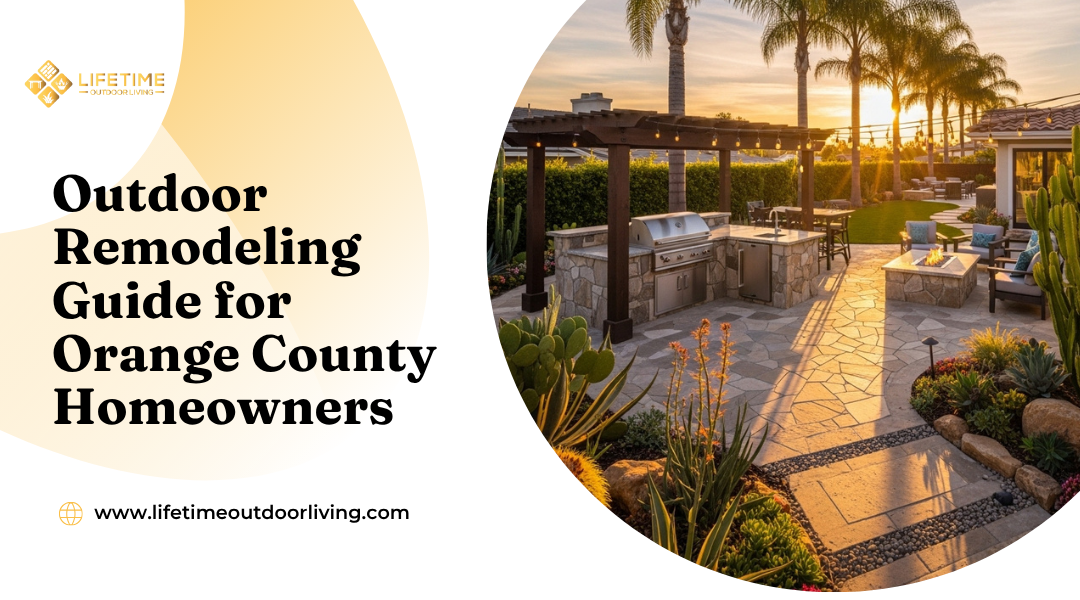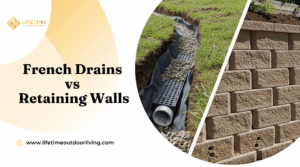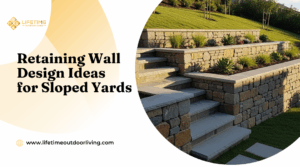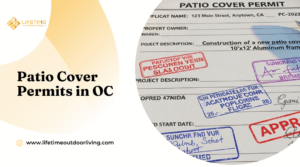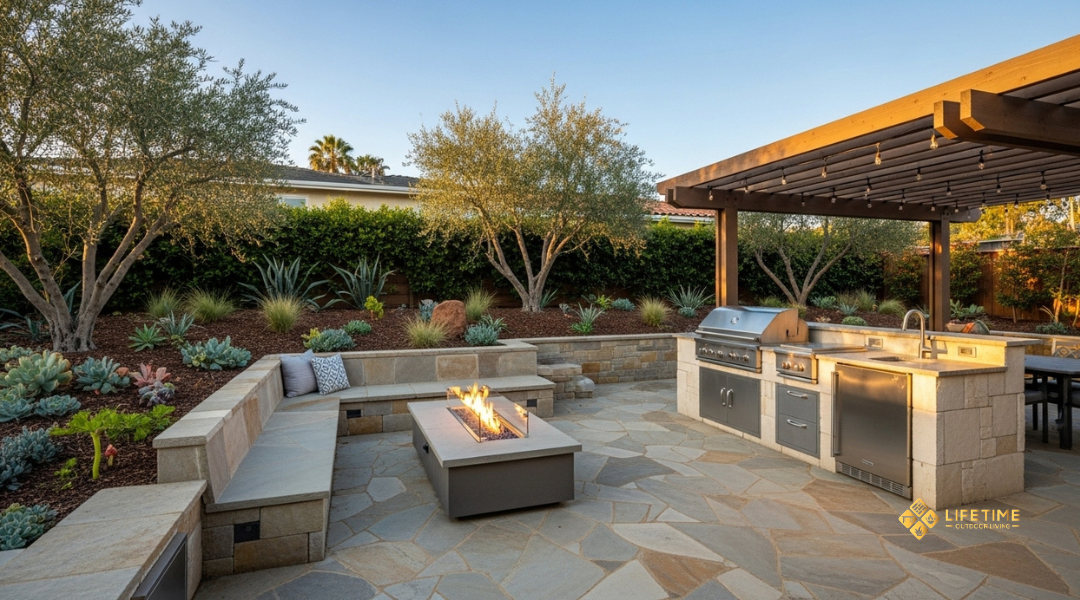
Orange County homeowners are transforming their outdoor spaces like never before, taking advantage of year-round perfect weather to create functional entertainment areas, resort-style retreats, and outdoor kitchens. Successful outdoor remodeling in Orange County requires careful planning around local permits, HOA requirements, and design choices that complement the region’s Mediterranean climate and architectural styles. Whether adding a deck, installing a pool, or creating a complete backyard makeover, homeowners need to understand the unique considerations that come with building in this coastal Southern California region.
The outdoor remodeling process involves multiple decisions about materials, contractors, and regulatory compliance that can significantly impact both project costs and long-term satisfaction. Orange County’s diverse neighborhoods each have specific requirements and aesthetic expectations that influence design choices. From coastal areas dealing with salt air corrosion to inland communities managing temperature extremes, location-specific factors play a crucial role in material selection and project planning.
This comprehensive guide covers everything Orange County homeowners need to know about outdoor remodeling, from initial planning and popular features to navigating permits and maximizing return on investment. Understanding these elements upfront helps homeowners avoid costly mistakes, ensure code compliance, and create outdoor spaces that enhance both property value and daily living enjoyment.
Why Outdoor Remodeling Matters In Orange County
Orange County’s Mediterranean climate and outdoor lifestyle create unique opportunities for homeowners to maximize their property investments through strategic outdoor renovations. These improvements deliver measurable returns while enhancing daily living experiences.
Boosting Home Value And Curb Appeal
Outdoor remodeling projects in Orange County typically generate strong returns on investment. Patio installations can recoup 60-70% of costs at resale, while comprehensive backyard renovations often add $15,000-$40,000 to home values.
Premium outdoor kitchens with built-in appliances command the highest returns. These installations appeal to buyers seeking entertaining spaces.
Landscaping improvements create immediate curb appeal benefits. Professional hardscaping with pavers or natural stone increases property attractiveness to potential buyers.
Key value-adding features include:
- Fire pits and outdoor fireplaces
- Built-in seating areas
- Water features
- Outdoor lighting systems
- Pergolas and shade structures
Real estate agents report that homes with well-designed outdoor spaces sell faster in Orange County’s competitive market. Properties with cohesive indoor-outdoor flow particularly attract buyers.
Adapting To Local Climate And Lifestyle
Orange County’s year-round mild temperatures make outdoor living practical from April through November. Average temperatures range from 65-75°F during peak outdoor months.
The Mediterranean climate features minimal rainfall and low humidity. This weather pattern supports extensive outdoor entertaining and dining.
Drought-resistant landscaping addresses local water restrictions while maintaining aesthetic appeal. Native plants require less irrigation and thrive in local soil conditions.
Homeowners invest in shade solutions to manage intense summer sun. Popular options include:
- Retractable awnings
- Sail shades
- Pergolas with climbing vines
- Market umbrellas
Pool and spa installations extend outdoor seasons into cooler months. Heating systems allow comfortable water temperatures through winter.
The region’s outdoor culture influences remodeling priorities. Families prioritize entertainment areas over traditional indoor formal spaces.
Planning Your Outdoor Remodel
Successful outdoor remodeling requires establishing clear objectives and financial boundaries while selecting materials that withstand Orange County’s Mediterranean climate year-round.
Setting Goals And Budget
Homeowners should define their outdoor space’s primary function before starting any remodel. Popular goals include creating entertainment areas, relaxation zones, or family gathering spaces.
Essential Planning Questions:
- What activities will the space accommodate?
- How many people should it seat comfortably?
- Which features are must-haves versus nice-to-haves?
Budget allocation typically follows the 20-30-50 rule for outdoor projects. Twenty percent covers planning and permits. Thirty percent goes toward materials and fixtures. Fifty percent funds labor and installation costs.
Common Orange County Remodel Costs:
- Basic patio renovation: $8,000-$15,000
- Mid-range outdoor kitchen: $15,000-$35,000
- Complete backyard transformation: $25,000-$75,000
Homeowners should add 15-20% contingency funds for unexpected issues. Seasonal timing affects costs, with spring and summer commanding premium prices due to high demand.
Choosing The Right Materials For OC Conditions
Orange County’s climate demands materials that resist UV damage, temperature fluctuations, and occasional rain. The region experiences intense sun exposure and minimal freeze risk.
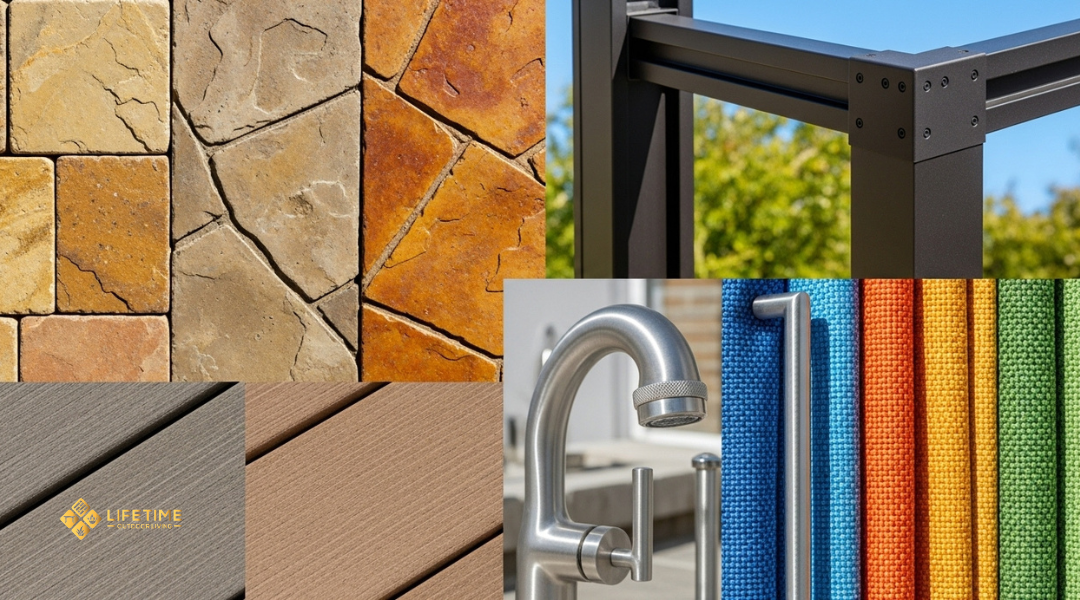
Best Material Choices:
- Stone and concrete: Natural stone, stamped concrete, and pavers handle heat cycles well
- Metal fixtures: Powder-coated aluminum and stainless steel resist coastal corrosion
- Composite decking: Withstands UV rays better than traditional wood
- Outdoor fabrics: Solution-dyed acrylic fabrics maintain color integrity
Avoid untreated wood, which warps in heat. Standard steel rusts quickly near coastal areas. Cheap plastics become brittle under constant sun exposure.
Colors matter significantly in Orange County’s climate. Light colors reflect heat and stay cooler underfoot. Dark materials absorb heat but may fade faster without proper UV protection.
Popular Outdoor Remodeling Features
Orange County homeowners consistently choose specific features that maximize their year-round outdoor living potential. Outdoor kitchens, durable paving solutions, low-maintenance landscaping, and effective shade structures top the list for creating functional entertainment spaces.
Pavers, Patios, And Walkways
Natural stone pavers remain the most durable choice for Orange County’s climate. Travertine, flagstone, and slate resist fading from UV exposure while providing slip-resistant surfaces around pools and entertainment areas.
Concrete pavers offer budget-friendly alternatives with endless design possibilities. Homeowners can choose from brick patterns, geometric designs, or large-format slabs that mimic natural stone.
Permeable paving systems address drainage requirements while creating attractive walkways. These systems allow water infiltration, reducing runoff and meeting local environmental standards.
Popular patio sizes range from 12×12 feet for intimate spaces to 20×30 feet for full entertainment areas. Most contractors recommend extending patios at least 8 feet from the house for proper proportion.
Walkway widths should measure 4-5 feet for main pathways and 3 feet for secondary routes. Curved pathways create visual interest while straight lines emphasize modern architectural styles.
Artificial Turf And Low-Maintenance Landscaping
Premium artificial turf costs $12-18 per square foot installed but eliminates water bills and maintenance time. Modern products feature varied blade heights and colors that replicate natural grass appearance.
Drought-resistant plants reduce water consumption by 60-80% compared to traditional lawns. Native California species like lavender, sage, and ornamental grasses thrive without irrigation systems.
Decomposed granite pathways complement Mediterranean and modern landscape designs. This material compacts well and costs $3-5 per square foot installed.
Hardscape elements like retaining walls and raised planters define spaces while minimizing planted areas. Homeowners typically allocate 70% hardscape and 30% planted areas for low-maintenance designs.
Drip irrigation systems target root zones directly, using 30-50% less water than spray systems. Smart controllers adjust watering schedules based on weather conditions and soil moisture levels.
Pergolas, Patio Covers, And Shade Solutions
Aluminum patio covers withstand coastal conditions without rusting or warping. These structures cost $15-25 per square foot and support ceiling fans, lighting, and outdoor speakers.
Wood pergolas using cedar or redwood create natural aesthetics but require annual maintenance. Homeowners should budget $20-35 per square foot for quality lumber and professional installation.
Retractable awnings provide flexible shade options for varying sun angles. Manual systems start at $8-12 per square foot, while motorized versions cost $15-25 per square foot.
Shade sails offer contemporary styling at lower costs than permanent structures. Triangle and square configurations create dramatic visual impact while blocking 90-95% of UV rays.
Louvered roof systems allow adjustable light and ventilation control. These premium solutions cost $35-50 per square foot but integrate seamlessly with smart home systems.
Outdoor Kitchens And Fire Features
Built-in BBQ islands typically measure 6-10 feet long and include storage, prep space, and utility connections. Basic configurations start at $8,000, while luxury designs with multiple appliances reach $25,000-40,000.
Essential appliances include gas grills, side burners, refrigeration, and storage drawers. Homeowners should plan 220V electrical service for refrigerators and adequate gas line sizing for multiple appliances.
Fire pits create year-round gathering spaces with diameters ranging from 36-48 inches. Natural gas connections eliminate wood storage needs while providing consistent flame control.
Linear fire features complement modern architecture and cost $3,000-8,000 installed. These designs integrate with seating walls and water features for sophisticated outdoor rooms.
Outdoor pizza ovens require concrete pads and proper ventilation clearances. Wood-fired models start at $4,000 while gas versions offer convenience at $6,000-12,000 installed.
Navigating Permits, HOAs, And Local Regulations
Orange County outdoor remodeling projects require careful attention to permitting requirements and homeowners association rules. Understanding these regulations upfront prevents costly delays and ensures compliance with local safety standards.
Common Permit Requirements In Orange County
Most outdoor remodeling projects in Orange County require permits to ensure safety and code compliance. The county’s permitting process protects homeowners and maintains neighborhood standards.
Structural changes always need permits. This includes decks, patios, pergolas, and outdoor kitchens. Even simple gazebos often require approval.
Electrical and plumbing work requires permits regardless of project size. Installing outdoor lighting, electrical outlets, or water features falls under this requirement.
Projects in floodplains or fire zones face additional restrictions. Homeowners must consult with county planners to understand special design requirements and safety measures.
Orange County offers Fast Track online permitting for many projects. This system allows electronic submission and faster processing times.
Final inspections close out permits once projects meet construction standards. Homeowners receive official documentation confirming code compliance.
Common permit-required projects include:
- Swimming pools and spas
- Retaining walls over 4 feet
- Outdoor fireplaces and fire pits
- Covered patios and outdoor rooms
- Fencing over 6 feet tall
Working With HOA Guidelines
Homeowners associations impose additional restrictions beyond county requirements. These rules often address aesthetics, materials, and design consistency throughout the community.
Review CC&Rs thoroughly before planning any outdoor project. Covenants, Conditions, and Restrictions outline specific requirements for exterior modifications.
Most HOAs require architectural review committee approval before starting work. Submit detailed plans, material samples, and color schemes for review.
Timeline requirements vary by association. Some HOAs need 30-60 days for approval, so factor this into project scheduling.
Common HOA restrictions include:
- Color palettes for structures and materials
- Height limitations for fences, pergolas, and other structures
- Material requirements specifying approved siding, roofing, or decking
- Setback distances from property lines
Documentation is essential throughout the process. Keep all approval letters and communications for future reference or resale purposes.
Some associations charge review fees or require deposits. Budget for these costs during project planning phases.
Hiring The Right Contractor
Selecting a qualified outdoor remodeling contractor requires thorough vetting of their credentials and experience with similar projects. Homeowners must also understand contract terms and warranty protections before signing any agreements.
Vetting Experience And Credentials
Homeowners should verify that contractors hold valid California contractor licenses through the Contractors State License Board website. Licensed contractors must carry liability insurance and workers’ compensation coverage.
Essential credentials to verify:
- Active contractor license number
- Current liability insurance (minimum $1 million)
- Workers’ compensation coverage
- Local business license
Experienced outdoor remodeling contractors should provide portfolios showcasing similar projects in Orange County. They understand local building codes, permit requirements, and weather considerations specific to the region.
Request references from projects completed within the past two years. Contact previous clients to ask about work quality, timeline adherence, and communication during the project.
Contractors should provide detailed written estimates that break down materials, labor, and timeline. Avoid contractors who request large upfront payments or provide only verbal estimates.
Understanding Contracts And Warranties
Written contracts protect both homeowners and contractors by clearly defining project scope, materials, timeline, and payment schedule. California law requires contracts over $500 to be in writing.
Key contract elements include:
- Detailed project description and materials list
- Start and completion dates
- Payment schedule tied to project milestones
- Change order procedures
- Lien waiver requirements
Quality contractors provide warranties on both workmanship and materials. Workmanship warranties typically range from one to three years, while material warranties vary by manufacturer.
The contract should specify warranty terms and procedures for addressing defects. It should also include cleanup responsibilities and permit acquisition details.
Homeowners have three days to cancel contracts signed at their residence under California’s Home Solicitation Sales Act. Never sign contracts with missing information or blank spaces.
Maximizing ROI And Long-Term Enjoyment
Strategic outdoor remodeling choices can significantly boost property value while creating lasting enjoyment for Orange County homeowners. Professional installation and proper material selection ensure maximum return on investment through enhanced functionality and reduced maintenance requirements.
Design Choices That Add Resale Value
Outdoor kitchens consistently deliver strong returns in Orange County’s year-round outdoor living market. Built-in grills, stone countertops, and stainless steel appliances appeal to buyers seeking entertainment spaces.
Fire features rank among the highest ROI outdoor improvements. Gas fire pits and fireplaces extend usable outdoor time during cooler evenings. Stone or concrete surrounds provide durability and visual appeal.
Hardscape patios using natural stone or high-quality pavers create lasting value. These materials withstand Orange County’s climate better than basic concrete. Proper drainage prevents costly repairs.
Landscape lighting systems enhance safety and showcase outdoor investments after dark. LED fixtures reduce energy costs while highlighting architectural features and plantings.
Irrigation systems demonstrate property maintenance commitment to potential buyers. Drip irrigation for drought-tolerant plants aligns with California water conservation requirements.
| Feature | Average ROI | Appeal Factor |
|---|---|---|
| Outdoor Kitchen | 55-70% | High |
| Fire Feature | 60-80% | High |
| Stone Patio | 50-65% | Medium-High |
| Landscape Lighting | 40-55% | Medium |
Maintenance Tips For Lasting Results
Seal natural stone surfaces annually to prevent staining and weather damage. Orange County’s sun exposure requires UV-resistant sealers for optimal protection.
Clean outdoor kitchen appliances monthly with manufacturer-approved products. Stainless steel requires specific cleaners to prevent corrosion from coastal moisture.
Trim plants around hardscape features to prevent root damage and maintain clean lines. Overgrown vegetation reduces visual impact and can cause structural issues.
Inspect irrigation systems quarterly for leaks or clogged emitters. Replace damaged components immediately to prevent water waste and plant loss.
Professional deep cleaning of patios and decks every 18-24 months removes embedded dirt and prevents permanent staining. Power washing maintains appearance between major cleanings.
Winter preparation includes draining water features and covering outdoor furniture. Even Orange County’s mild winters require basic protection for expensive installations.

